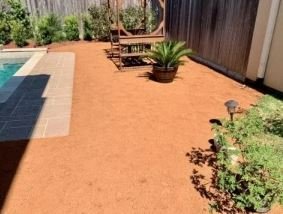Sand garden
A Sand garden, sometimes referred to as a Zen garden, is a simple landscape intended to encourage simplicity, peace, and meditation. These gardens, which have their roots in Japanese culture, provide a calm and contemplative environment with the help of sand, pebbles, and thoughtfully positioned artifacts.
To keep the sand contained, an outdoor sand garden can benefit from a wood or stone border. A shallow tray or box is ideal for indoor gardens. Make certain that the sand is dispersed equally in the area. Place stones on the sand to symbolize mountains, islands, and other natural features. Take into account the design's balance and flow, as these components are essential to the garden's beauty.
A sand garden can serve as a place for artistic expression, mindfulness, and introspection in addition to being a landscaping element. You may create a calm atmosphere that calms the mind and lifts the soul by embracing its symbolic style and simplicity. A sand garden is a classic complement to any area, regardless of design.
In Japan, the earliest sand gardens were made by Buddhist monks as a meditation tool. These gardens use simple materials like sand, stones, and gravel to create the appearance of natural landscapes like rivers and mountains. Sand gardens gained popularity outside of temple grounds over time and are now appreciated for their beauty and tranquility all over the world.
Mason sand is a fine white sand with several applications. Play sand is another name for this sand. It is used in building mortar as a fine aggregate. It is also a concrete mortar mix. Double-screened fine sand is what washed mason sand is. Mason sand can be used as a sand base for above-ground pools, as well as for playground areas and sand volleyball courts.
